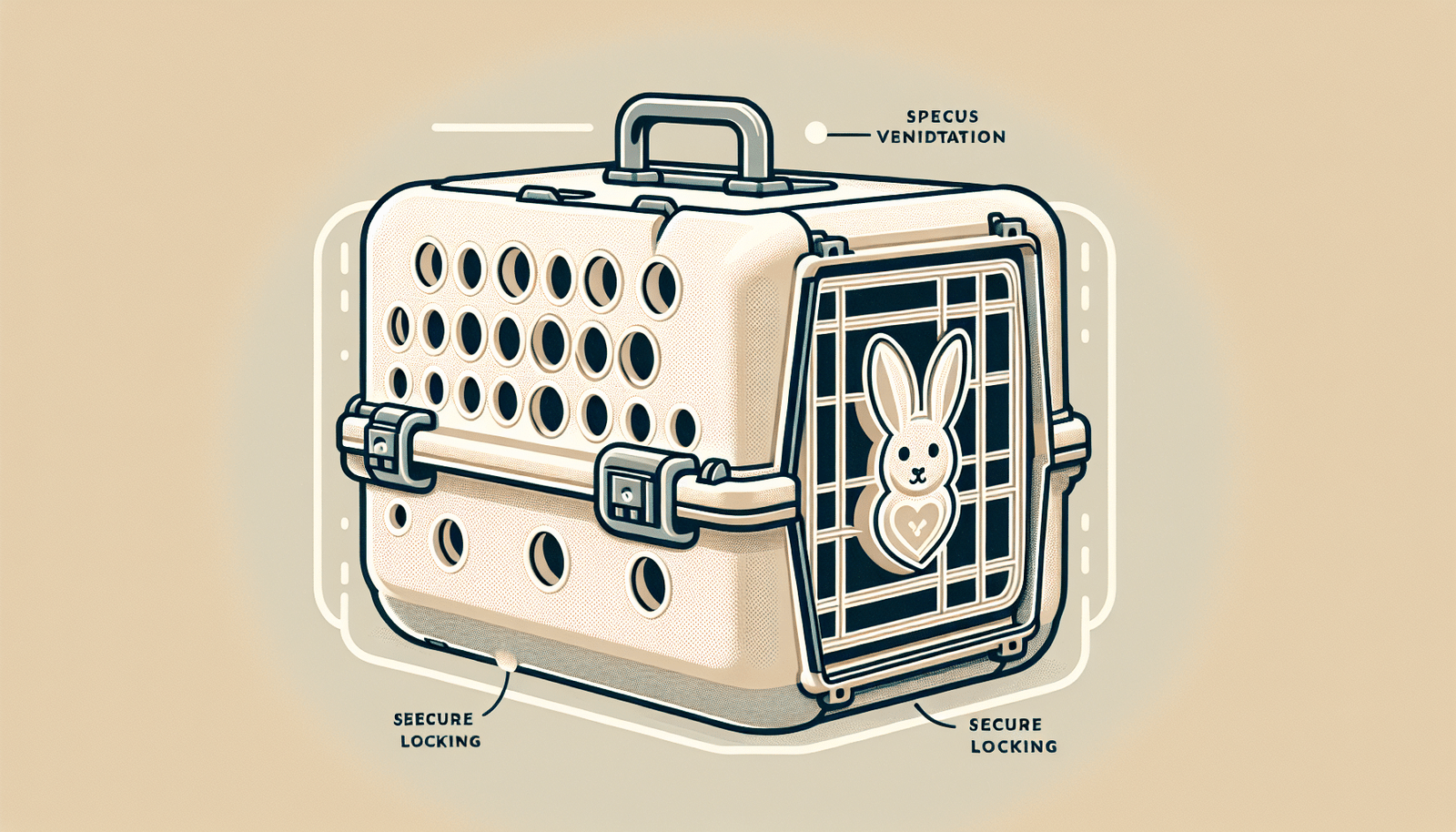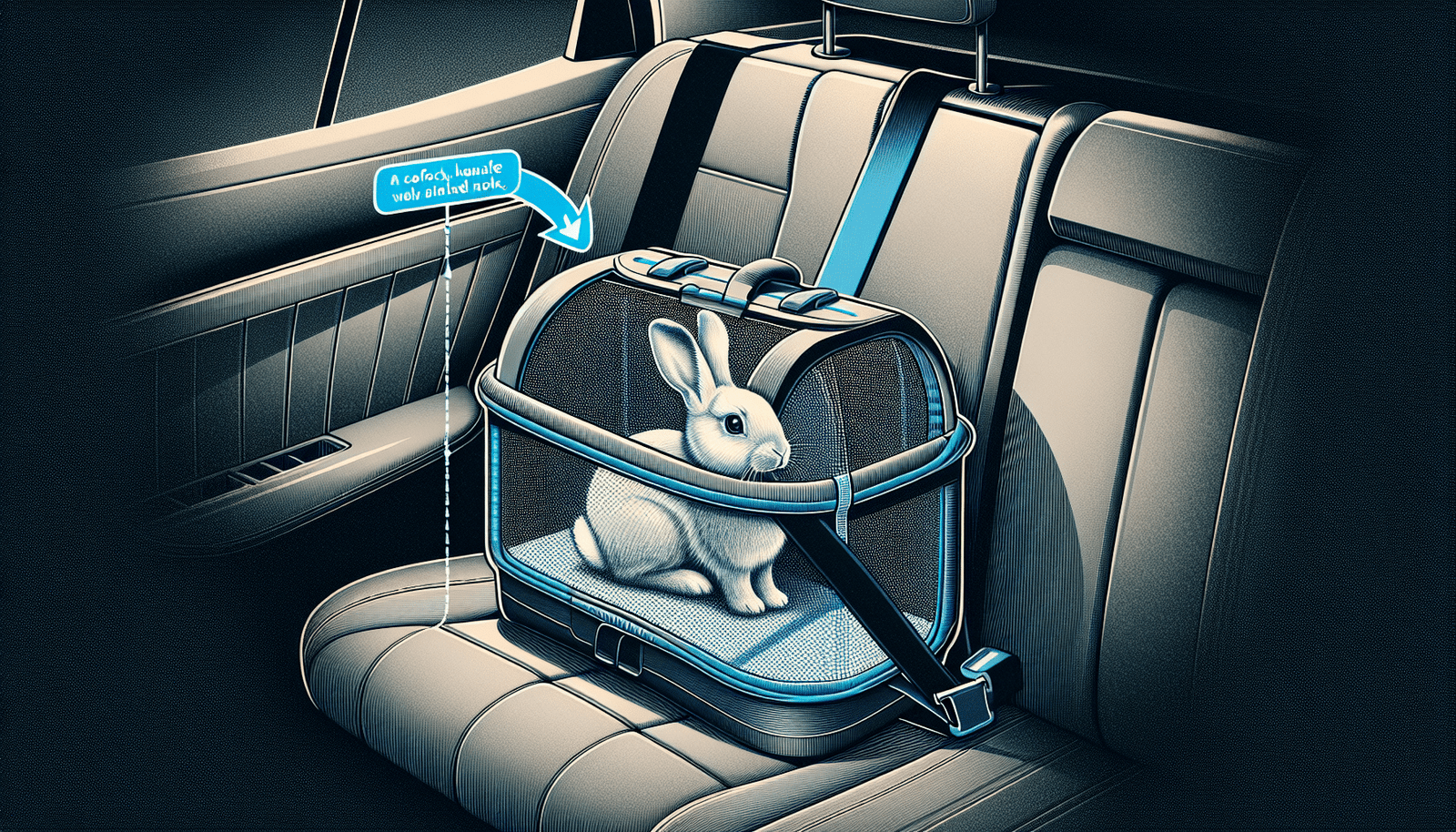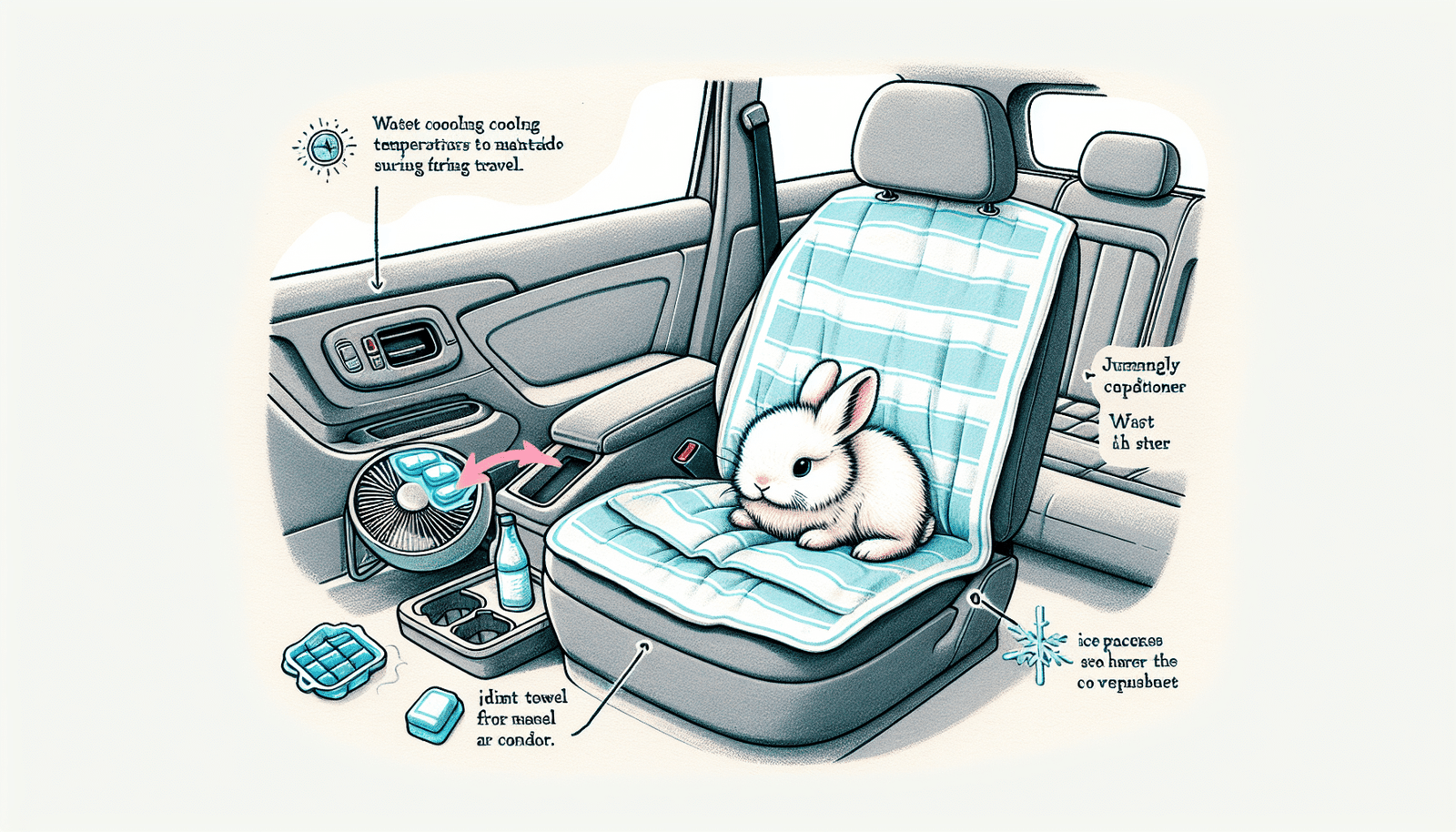Traveling with bunnies in a car can be challenging, but ensuring their safety and comfort is important. Proper preparation is key whether it’s a short trip to the vet or a long move. In this guide, you’ll find essential tips for making car travel with your bunny as smooth and stress-free as possible.
Key Takeaways
-
Choose a sturdy, spacious carrier and get your bunny comfortable with it using gradual introductions and treats.
-
Set up the car for safety and comfort by securing the carrier, maintaining a cool environment, and providing familiar comforts like toys and towels.
-
Plan for regular pit stops to offer food, water, and a break from the journey, and ensure safe handling to minimize stress.
Preparing for the Journey
Before we dive into the bunny travel saga, let’s get one thing straight: I’m all for keeping rabbits’ paws on familiar turf. However, when life calls for a car ride to the vet or a move to a new burrow, planning is the golden rule. Whether it’s a short trip to the countryside or a long-distance leap to a new state, gathering the right supplies and knowing where to take a breather for some carrot-crunching time is crucial.
Remember, this isn’t just about reaching the final destination; it’s about making the journey as stress-free as possible for your floppy-eared friend.
Choosing an Appropriate Carrier

Picking the perfect pet carrier is like choosing a first-class seat for your bunny’s car travel. Size matters, but so does accessibility. You’ll want an airline-approved carrier, like United Airlines, that’s spacious enough for a little hop around without compromising on safety. Think sturdy, not a flimsy cardboard carrier, and avoid plastic doors at all costs—rabbits are notorious nibblers, and you don’t want an escape artist on your hands.
My go-to is a robust 19” carrier that opens from the top and sides, perfect for a solo bunny or a bonded pair looking for a secure, cozy nook.
Getting Your Rabbit Used to Their Carrier
Now, convincing your bunny that their carrier is a haven and not a hare’s horror requires some finesse. It’s not just about plopping them in; it’s about building trust. Gradual introductions paired with tasty treats can turn the carrier into a place of comfort.
The House Rabbit Society suggests target training to sweeten the deal—literally. With patience and practice, most rabbits will learn that their rabbit’s carrier is a familiar safe space, not a prelude to unwanted car travel.
Setting Up the Car for Bunny Travel

Alright, the carrier conundrum is cracked, but what about the car setup? Think of it as your rabbit’s mobile living room. Securing the carrier is non-negotiable; it should be nestled safely in the back seat, away from the perils of direct sunlight and airbags.
And remember, bunnies are cool characters—literally. They prefer a chill environment, so keep that car cool and the music mellow, so your furry navigator enjoys the ride.
Securing the Carrier
Safety first, fluff later. The best spot for your bunny’s carrier? Snug on the floor behind the passenger seat, shielded from the chaos of a moving vehicle and sudden stops. This strategic spot keeps your rabbit stable and secure, and it’s a lifesaver in case of those unexpected brakes. Think of it as the bunny equivalent of a seatbelt—it’s all about keeping your hopper from becoming a high-flyer.
Cooling the Car

Now, let’s talk climate control. Rabbits are more sensitive to heat than your average sunbather, so keep the air conditioning on and the vibes cool. Steer clear of blasting the carrier with direct airflow; instead, aim for a gentle ambiance that whispers ‘cool burrow’ rather than ‘icy tundra.’
And if you’re hitting the road in winter, remember that a slightly cooler car is better—think comfortable, not chilly. Throw in a damp towel or an ice pack for extra chill points, but wrap it up; you don’t want a frosty bunny.
Essential Supplies for Car Travel
Your bunny’s suitcase won’t have socks and sandals, but it should be packed with travel essentials. Chew toys, extra towels, and a fortress of cardboard can turn a dreaded car trip into a manageable adventure.
Whether it’s nibbling on a toy or lounging on a soft towel, these creature comforts can make all the difference in your rabbit’s car travel experience.
Emergency Travel Kit
Imagine hitting a bump in the road, and your bunny’s not feeling top-notch. That’s where the emergency travel kit comes into play. Stock it with an ice pack to combat any signs of overheating—wrapped in a towel, of course—and an all-purpose cleaner for surprise spills.
And don’t forget the extra paper towels and cleaning supplies; they’re the unsung heroes of any rabbit road trip, ready to mop up, cover-up, or cozy up as needed.
Comfort Items
Layering the carrier with a towel adds a touch of home and helps soak up any accidents. Then, blanket that base with hay—think of it as a salad bar on the go. Wet veggies will keep your bunny hydrated, but be wary of water bowls; unless you’re keen on creating a splash zone in the backseat, a water bottle might be the wiser choice.
Managing Stress and Health During Travel
Travel can be a hopscotch of emotions for your rabbit, from mild annoyance to full-blown distress. Since they can’t bunny-kick the car into the park, it’s up to you to keep an eye on their comfort and health. Here are some tips to ensure a smooth and stress-free travel experience for your bunny:
-
Give your rabbit soft pets and soothing words to help them feel calm and reassured.
-
Create a calm environment in the car by playing soft music and keeping the temperature comfortable.
-
Consider using herbal remedies to help relax your bunny during the journey.
These simple steps can make the difference between a frazzled furball and a content companion on your travels.
Recognizing Stress Signs
Like a magician’s tell, a rabbit’s stress is subtle but detectable. Watch for the freeze, the evasion of your gaze, the stillness that’s a tad too still. These are your cues to dial down the stressors, whether it’s a quieter environment or a reassuring stroke.
Remember, a relaxed rabbit is a healthy rabbit, especially on the road.
Preventing Heatstroke and GI Stasis
Heatstroke and GI stasis are like unwanted hitchhikers on your bunny’s travel itinerary—avoid them at all costs. Keep your rabbit hydrated with fresh veggies and the occasional syringe of Pedialyte. And be vigilant: Heavy panting or lethargy are SOS signals for immediate action. Your quick response could be a lifesaver.
Pit Stops and Breaks
Long journeys, especially medium-haul flights, call for well-timed pauses, not just for you but for your furry passenger too. Think of pit stops as mini vacations, where your bunny can stretch their legs, refuel, and sip some water.
A half-hour to an hour break is a welcome respite for your rabbit and a chance for you to ensure they’re handling the trip like a champ.
Offering Food and Water
During these intermissions, offer a buffet of hay, a selection of fresh greens, and a sip from the water bottle. It’s a simple gesture that keeps your bunny’s digestive system on track and their spirits high.
After all, a well-fed rabbit is a happy traveler.
Safe Handling During Stops
But even during these breaks, bunny safety is paramount. Keep the carrier closed until you’re ready to handle your rabbit, and never near an open car door.
Establishing a routine for these stops can help minimize stress for both you and your hoppy companion, making the journey smoother for everyone.
Overnight Accommodations
As night falls and eyelids droop, finding a cozy spot for you and your bunny to rest is essential. Not all hotels roll out the welcome mat for rabbits, so do your homework and book a place where both you and your floppy-eared pal can unwind without worry. And remember, the comforts of home go a long way in a strange new room.
Finding Rabbit-Friendly Hotels
Start your hotel hunt with a keen eye for the ‘pets allowed’ sign, but take the extra step to confirm rabbits are included in that warm welcome. Online searches and pet travel forums can point you to bunny-approved lodgings. And when booking, mention your rabbit to avoid any raised eyebrows at check-in. Transparency is key to a stress-free stay.
Setting Up at the Hotel
Once you’ve checked in, create a temporary bunny haven in your room. Limit their exploration until you’ve bunny-proofed the space, then set up a familiar enclosure with their favorite blanket and toys.
This familiar setup, including a litter box, helps ease the transition to a new environment, making your multiple rabbits feel right at home.
Post-Travel Care
The journey’s end is just the beginning of your rabbit’s acclimation to their new surroundings. Unpack swiftly, establish a routine and give your bunny the time they need to adjust.
A cozy, covered exercise pen can simulate the safety of a burrow, and familiar sights, smells, and sounds can help soothe travel-induced jitters for emotional support animals.
Establishing a Routine
Consistency is comforting, especially after the hustle and bustle of travel. Reintroduce your rabbit to their usual activities and mealtimes as quickly as possible. Their home setup should echo the one they’ve left behind, with their beloved bedding, toys, and hideouts in place. This continuity is the key to a smooth transition.
Monitoring Health After Travel
Post-travel, keep a watchful eye on your rabbit for any signs of distress or illness. Look for changes in behavior, appetite, and bathroom habits, as these can indicate underlying issues. If something seems off, don’t hesitate to seek veterinary advice.
The peace of mind that comes with knowing your pet rabbit is healthy is worth its weight in carrots.
Summary
And there you have it, a trail of bunny breadcrumbs leading to safe and happy travels with your furry friend. From carrier considerations to cozy hotel stays, the journey can be as delightful as the destination with the right preparation. So, the next time you glance in your rearview mirror and see those twitching whiskers, you’ll know you’ve got this travel thing down to an art. Here’s to many more miles of memory-making with your bunny co-pilot!
Frequently Asked Questions
Do I need a travel carrier for my rabbit, or can they ride in the car seat?
Yes, you need a travel carrier for your rabbit when traveling by car. It’s essential for keeping your rabbit safe and secure during the journey.
How often should I take breaks during a long car ride with my rabbit?
You should plan for breaks every couple of hours during a long car ride with your rabbit, lasting 30 minutes to 1 hour. This will give your rabbit time to de-stress, eat, and drink.
What should I include in an emergency travel kit for my rabbit?
Make sure to include ice packs, towels, water, and cleaning supplies in your emergency travel kit for your rabbit to keep them safe and comfortable during unexpected situations. And remember to regularly check and update the kit as needed!
How can I tell if my rabbit is stressed during the trip?
If your rabbit is freezing, avoiding eye contact, or showing a lack of movement during the trip, it’s likely stressed. Watch out for these signs and try to make the trip more comfortable for your rabbit.
What should I do if my rabbit isn’t acting normally after we reach our destination?
If your rabbit isn’t acting normally after reaching your destination, monitor their behavior closely and consult a veterinarian immediately if you notice anything concerning, like a lack of appetite or unusual aggression.



